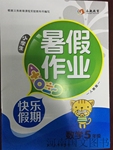閱讀理解。
"Who made your T-shirt?" A Geo letown University student raised that question. Pietra Rivoli, a professor
of business, wanted to find the answer. A few weeks later, she bought a T-shirt and began to follow its path
from Texas cotton. rim to Chinese factory to charity bin (慈善捐贈箱). The result is an interesting new book.
The trat ' s of a T-shirt in the Global Economy (經濟).
Following a T-shirt around the world in a way to make her point more interesting, but it also frees Rivoli
from the usual arguments over global trade. She goes wherever the T-shirt goes, and there are surprises
around every corner. In China, Rivoli shows why a clothing factory, even with its poor conditions, means a
step toward a better are for the people who word there. In the colorful used-clothing markets of Tanzania, she
realizes that "it is only in this final stage of life that the T-shirt will meet a real market," where the price of a
shirt changes by the hour and is different by its size and even color.
Rivoli ' s book is full of me able people and scenes, like the noise, the bad air and the"muddy-sweet smell
(泥土香味) of the cotton." She says, "Here in the factory, Shanghai smells like Shallo water Texas." Rivoli is
her best when making those sorts of unexpected connections, She even finds one between the free traders and
those who are against globalization. The chances opened up by trade are vast, she argues, but free markets
need the correcting force of politics to keep them in check. True economic progress needs them both.
1. What do we learn about Professor Rivoli?
A. She used to work on a cotton farm.
B. She wrote a book about world trade.
C. She wants to give up her teaching job.
D. She wears a T-shirt wherever she goes.
2. By saying T-shirts "meet a real market", Rivoli means in Tanzania _____.
A. cheaper T-shirts are needed
B. used T-shirts are hard to sell
C. prices of T-shirts rise and fall frequently
D. prices of T-shirts are usually reasonable
3. What does the word"them" underlined in the last paragraph refer to?
A. Free markets.
B. Price changes.
C. Unexpected connections.
D. Chances opened up by trade.
4. What would be the best title for the text?
A. What T-shirts Can Do to Help Cotton Farms
B. How T-shirts Are Made in Shanghai
C. How T-shirts Are Sold in Tanzania
D. What T-shirts Can Teach Us

 永乾教育寒假作業快樂假期延邊人民出版社系列答案
永乾教育寒假作業快樂假期延邊人民出版社系列答案